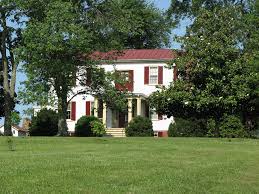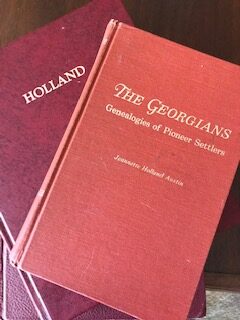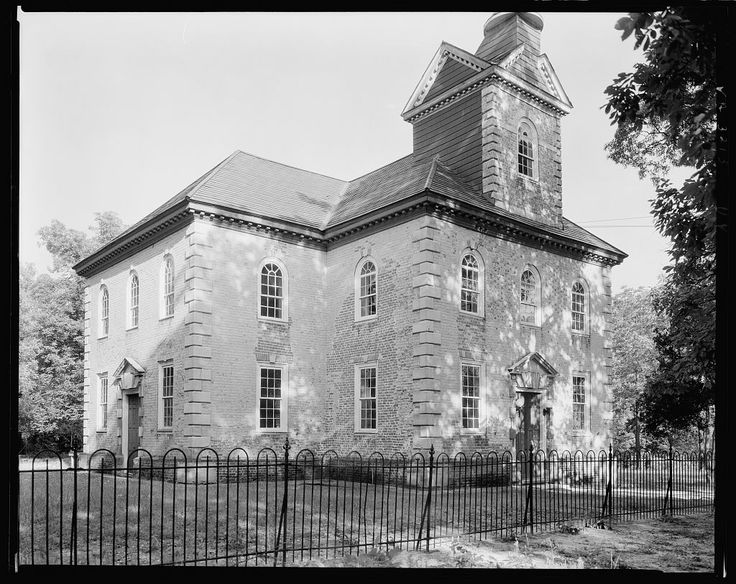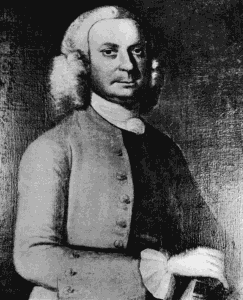Stafford County Genealogy, Wills, Marriages, Probate Records

Stafford County is located across the Rappahannock River from the City of Fredericksburg. The county seat is Stafford.
Indexes to Probate Records
- Index to Stafford Wills (1722-1729)
Miscellaneous Wills, Estates
Clement, Edward (LWT) 1733
Elzey, Margaret, deceased (1730) (Image)
Fudd, Michael (Inventory) ca 1733
Grigsby, Charles, LWT (1740) (image)
Grigsby, John, LWT (1728) (image)
Johnson, Booford, estate, inventory (1740) (image) Mauzy, Peter, orphan (image)
Marriages
- Marriages to 1699
Images of Wills 1699 to 1709
Testators: Alexander, Robert | Ashton, James, estate | Beath, Peter | Benson, Hugh | Bland, James | Brent, George | Brewton, John | Buckner, Philip | Cornwall, Ann | Enno, George | Farlow, Ann | Fitzhugh, William | Harman, Christopher | Harwood, William | Harvey, John | Jenkins, David | King, William |Littlejohn, Oliver | Mann, James | Martin, Richard |Matheny, William |Pickett, Joyce |Richardson, William |Taylor, Edward |Thomson, William |Vandagesteel, Giles |Waller, William |Williams, Anthony |Withers, John (Captain) |Wood, William
Images of Wills 1729 to 1748
Testators: Barrow, Abraham | Bayles, John | Boles, Thomas | Brent, William | Burras, Mary |Butler, James |Cave, William |Chadwell, John |Chalmers, John |Claiborne, Thomas |Collinsworth, Mary | Cooke, John |Cosby, George |Counts, Joseph |Craford, John |Croftrodge, Thomas |Crowley, George |Denny, James |Derrick, Mattox |Duncan, Thomas |Ellit, Charles |Fowke, Chandler | French, Hugh | Grant, Ann | Gregg, Lucy | Grigsby, John | Grigsby, Thomas | Higgerson, John | Hore, Elias |Howard, John | Hurst, John | Jeffrice, Thomas | Joanes, John | Jones, Susan | Keen, Matthew | Massey, Dodd | Masters, Thomas | Mealy, Daniel | Mees, Mary | Ponton, Edward | Powel, Grace |Scott, Alexander |Scott, William |Seaton, James |Todd, Richard |Warner, John |Waugh, John |Waugh, Joseph |Wheeler, John |Wigginton, William |Withers, James
Images of Wills 1748 to 1763
Testators: Alexander, Philip |Allan, George |Anderson, John S. |Barbee, Thomas |Baxter, William |Bosholl, Edward |Brent, Charles |Brout, Hannah |Brown, John |Buckner, John |Burge, Edward |Carter, William |Chambers, Daniel |Chapman, Taylor |Chinn, Rawleigh |Clifton, Burdit |Colclough, Rachel |Conway, Sarah |Cook, Fravors |Dade, Cadwallader |Dade, Townshend |Dade, Laughton |Denaugh, Morrice |Durrcom, Benjamin | Eaves, Thomas |Edwards, Ignatius |Findley, Mary |Fitzhugh, Henry |Fletcher, George | Foley, John |French, Daniel |Grady, Patrick | Grafford, Mary |Grigg, Nathan |Grigsby, James |Grigsby, Jane |Hampton, William |Harper, Thomas | Herod, John |Hinson, Charles | Hood, Rino | Johnson, John | Mathews, William | Mauzy, Peter |McCarty, Cornelius |McGill, Sarah |Minor, John |Murray, Anthony |Nelson, Henry Sr. |Parkridge, Eleanor |Patton, William |Pearson, Hannah |Persons, Ann |Peyton, John |Rhodes, John |Rigsby, Alexander | Robinson, Henry |Rogers, John |Simpson, John |Stuart, David |Smith, John R. |Sturdy, Robert |Sudderth, James |Sudderth, Robert |Thomas, Benjamin |Thornberry, Samuel |Thornton, Anthony | Todd, Hayward |Travors, Rawleigh |Walker, William |Waller, Charles |Waller, Susannah |Washington, Henry |Washington, John |Waugh, James |Waugh, Mary |Whitecotton, Sarah |Williams, George |Williams, Jennett |Williams, Thomas
Traced genealogies and family histories of Stafford County available to Members !
| Anderson | Arnold | Arthur | Callaway | Clay |
| Early | Irving | Leftwich | Lynch | Otey |
Discovering when Ancestors First Came to America

Accessing Immigration Records
Genealogy Tips from Jeannette Holland Austin
Except for some regional libraries that have a set of books containing names of immigrants, the best opportunity to find immigration records is at the National Archives. For various reasons, the Ship Manifest was not always given over at the time of arrival. And, sometimes several months passed after the voyage. The genealogist can expect to learn the name of the vessel and the date of entry into the United States. A list of passengers with information concerning their nationality, where born, age, height color of hair, occupation, and place of last residence. The National Archives has records of arrivals to the United States from foreign ports between approximately 1820 and 1982 and are arranged by Port of Arrival. As in all research, diligence is the key. However, one also needs to educate himself concerning common ports of entry for different time periods.
The Substance of Genealogy = Old Wills and Estates
Genealogy Tips by Jeannette Holland Austin
There is more personal family information and clues contained in old wills and estates than in a census record. And it is more accurate because it was written by an ancestor who wished to be remembered, and found later in time; after he had gone. It usually provides all the names of the children and their spouses, grandchildren, siblings, and parents and could even include the names of relatives residing in foreign countries. Reading an old last will and testament, along with its inventories, sales, annual returns, and other estate data is an open book into the life experiences of another person. Also, it provides multiple clues to discovering other relatives, should we examine it more closely. Not only do we get the whereabouts of family members, but also their origins. One mention of a relative in a foreign country, for example, is worth thousands of research hours. Actually, estate details provide a parcel of clues in the Annual Returns. These returns commence with the last illness, and funeral details, and as additional returns are filed (annually until the final settlement), tidbits appear of personal data appear, such as letters received from relatives in other places and all sorts of clues about where to search next. Names of relatives, neighbors, and friends are plastered all over those records. And do not forget to search for receipts! If you do this much, more family members will emerge and as well as a pattern of clues.
Aquia Church, Overwharton Parish, Stafford County


John Mercer of Marlborough, Virginia
By 1725 he had accumulated 322 pds. worth of tobacco which was located inside a warehouse at the falls of the Rappahannock River. On June 10th he was married to the sister of George Mason, Catherine which occasion was celebrated at the home of Mrs. Ann Fitzhugh in King George County with the Reverend Alexander Scott of Overwharton Parish in Stafford County officiating. Thus, age the young age of twenty one years, Mercer became allied to the old established aristocracy of the Fitzhughs. During 1725 Mercer pressed ahead with his trading enterprises. From his journal it is learned that he sold Richard Ambler of Yorktown 710 pds of raw Deerskins for 35 pds. 10 shillings and purchased 200 pds. of sundry goods from Ambler as well. Between October 1725 and February 1726 he sold a variety of furnishings and equipment to Richard Johnson, ranging from a horsewhip and a silk rug, shoemaker knives and an ivory Comb. In return he received two hogsheads of tobacco, a gallon of cider, and raw and dressed deerskins. At the time, the only house standing at Marlborough was that which had been built by Thomas Ballard in 1708. It was inherited by his godson David Waugh, who now apparently offered to allow his niece Catherine and her new husband to occupy it. Mercer later referred to it as ” the House I lived in built by Ballard.” In 1725 he purchased from his wife Catherine 885 acres of land near Potomac Church for 221 pds. and another tract of 1610 acres on Potomac Run for 322 pds. His journal recorded that he moved to Marlborough in 1726. In his own words written toward the end of his life when he was not overburdened with wealth: ” Except my education, I never got a shilling of my fathers or any other relations estate, every penny I ever got has been by my own industry and with as much fatigue as most people have undergone.” Source: The Cultural History of Marlborough, Virginia by C. Malcolm Watkins. Source: Dalrymple’s revision of the map by Joseph Fry and Peter Jefferson in 1755 (Library of Congress).
